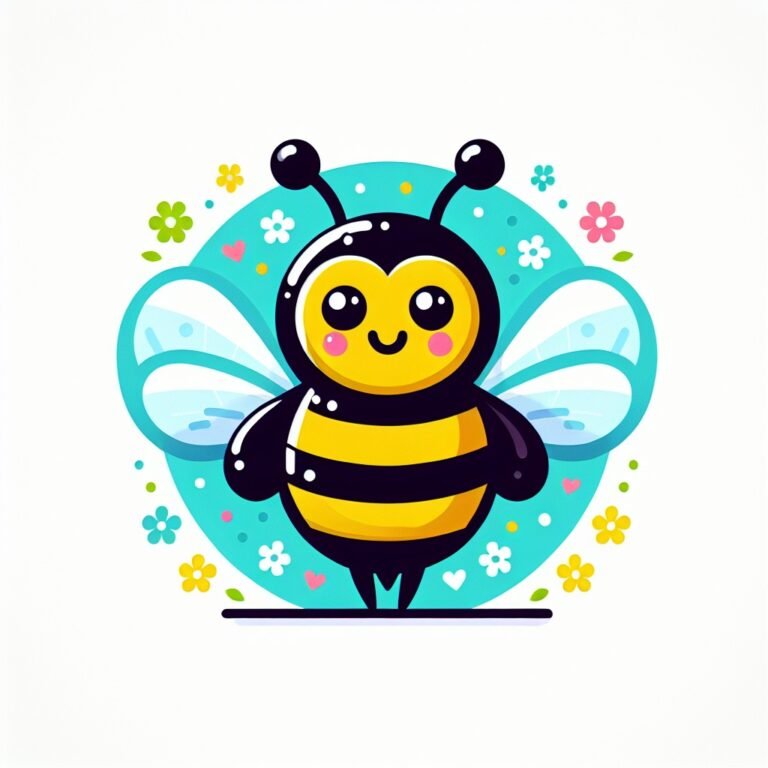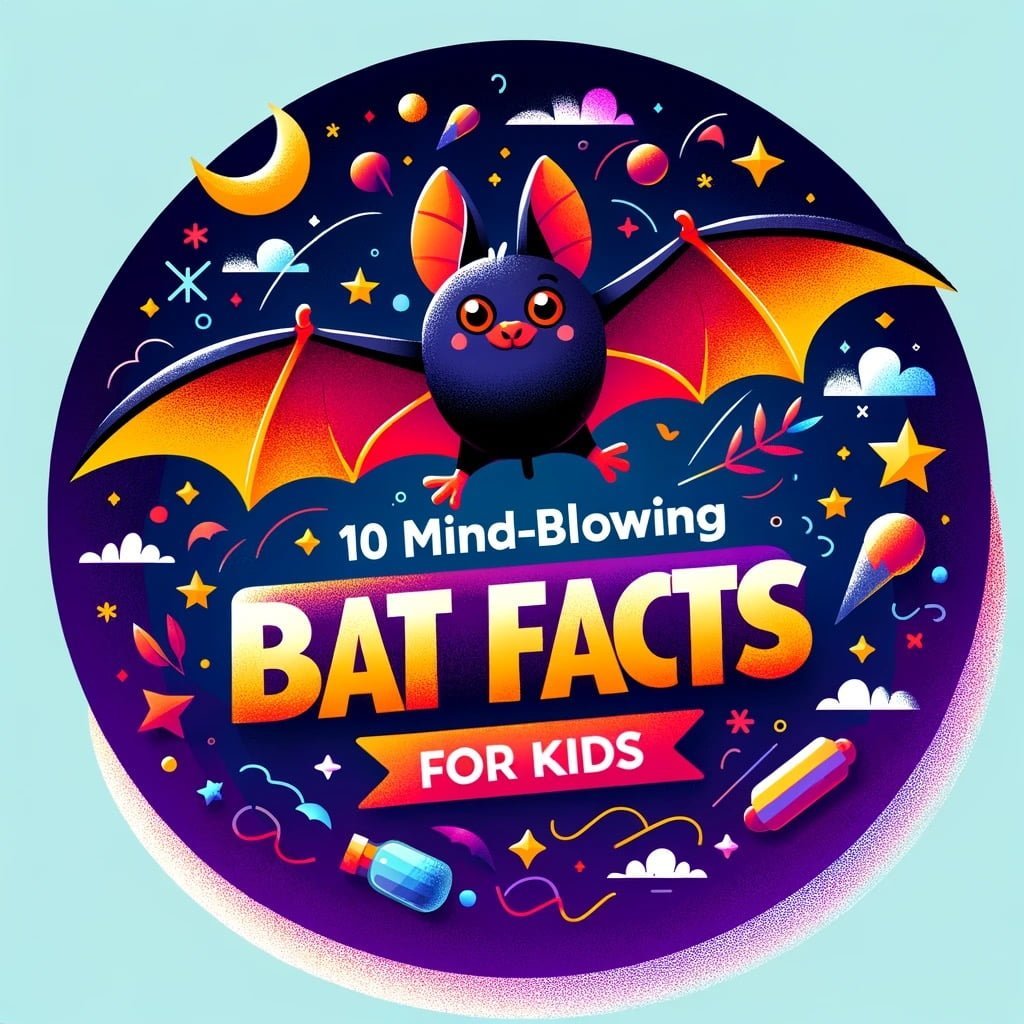Welcome to our blog post full of fascinating Bee Facts For Kids! Join us as we delve into the remarkable world of bees and uncover the amazing abilities and behaviors of these buzzing insects. From their intricate waggle dances to their mathematical prowess, bees are truly extraordinary creatures. Whether you’re a younger reader looking to learn some fun facts or an older reader interested in the science behind these amazing insects, there’s something for everyone in this post. Get ready to be amazed by the incredible abilities of bees and gain a newfound appreciation for these essential pollinators. Let’s dive in and discover the incredible world of bees together!
Bee Facts For Kids
1. Bees Dance to Communicate
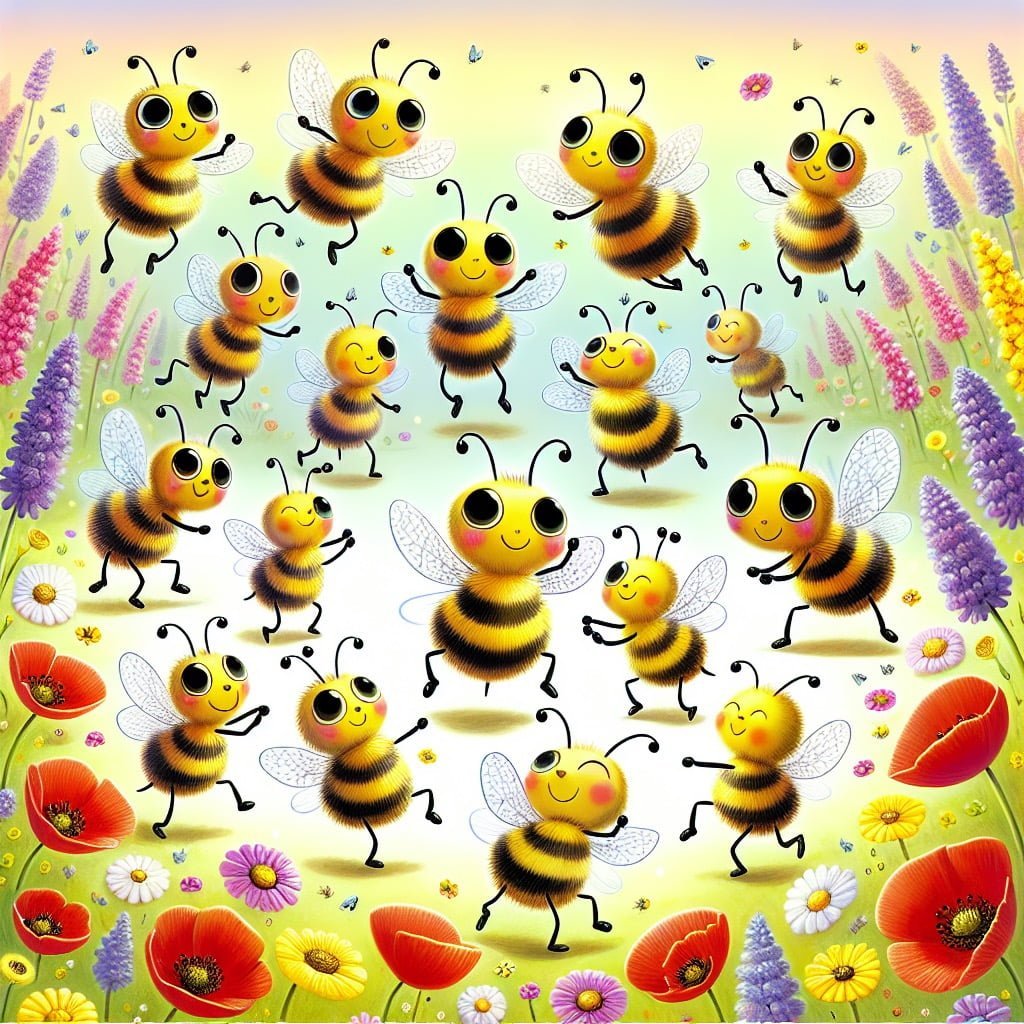
For younger kids: Bees do a special dance to show their friends where yummy flowers are.
For older kids: Bees perform intricate ‘waggle dances’ to share information about food sources; the angle and duration of the dance indicate the distance and direction of the flowers.
Detailed explanation:Bees are fascinating creatures that exhibit complex social behaviors, one of which is their unique form of communication through dancing. This behavior, known as the “waggle dance,” is used by worker bees to convey information about food sources to other members of the hive. This dance has been studied extensively by scientists and is considered a remarkable example of animal communication.
When a foraging bee returns to the hive after discovering a new food source, it performs the waggle dance on the vertical surface of the honeycomb. The bee moves in a figure-eight pattern, with the angle and duration of the waggle portion indicating the direction and distance of the food source from the hive. Other worker bees observe this dance and interpret the information to locate the food and collect it.
Interestingly, the waggle dance is not only used to communicate the location of food sources but can also convey information about potential new hive sites. When a swarm of bees is searching for a new nesting location, scout bees will perform the waggle dance to advertise their findings to the rest of the swarm.
In conclusion, the fact that bees dance to communicate is a captivating aspect of their behavior that showcases their intelligence and complex social structure. By using the waggle dance, bees are able to share important information with their hive mates and make collective decisions for the benefit of the entire colony. This remarkable behavior highlights the fascinating world of bees and their sophisticated means of communication.
Bee Facts For Kids
2. Bees Can Recognize Human Faces
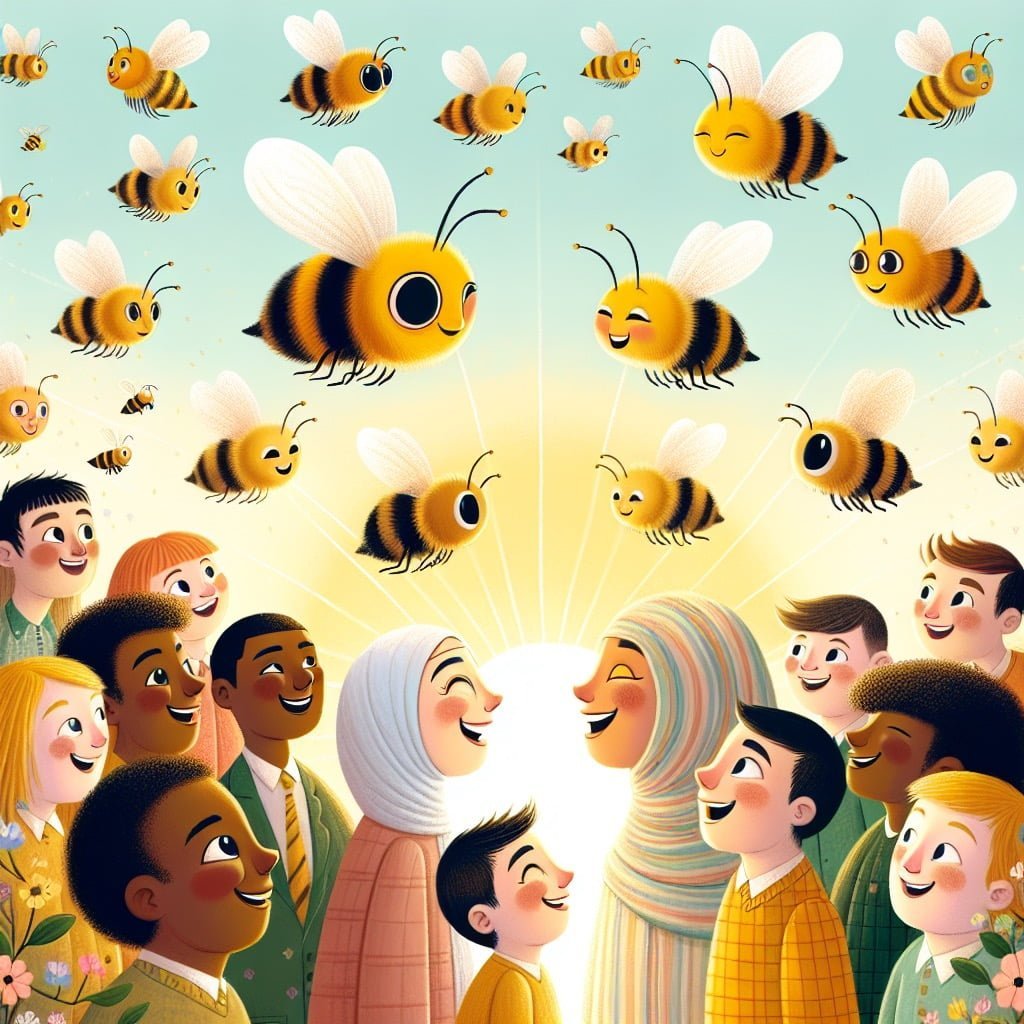
For younger kids: Bees are super smart—they can remember what human faces look like!
For older kids: Bees have the ability to recognize and remember human faces, making them one of the few insects with this remarkable cognitive skill.
Detailed explanation:Bees are fascinating creatures with complex cognitive abilities that may surprise many people. One particularly intriguing fact about bees is that they can actually recognize human faces. This ability is quite impressive, especially considering the relatively small size of a bee’s brain.
Research has shown that bees are able to learn and remember human faces by processing the patterns and features of the face. This skill is likely an adaptation that helps bees differentiate between different individuals, such as recognizing a friendly human who regularly provides food sources like flowers, and an unfamiliar human who may pose a threat.
One study conducted at the University of Queensland found that bees were capable of associating a specific human face with a sugary reward. By training the bees to extend their proboscis (mouthparts) in response to a particular face, researchers demonstrated the bees’ ability to visually recognize and remember human faces.
Bees’ remarkable capacity to recognize human faces demonstrates their sophisticated visual processing abilities and memory skills. This ability is not only fascinating from a scientific perspective but also sheds light on the intricacies of the social behaviors of bees within their colonies.
In conclusion, bees’ ability to recognize human faces is a testament to their complex cognitive abilities and serves as yet another example of the remarkable capabilities of these important pollinators. It is truly a remarkable fact that can captivate the curiosity of children and adults alike who are interested in learning more about the amazing world of bees.
Bee Facts For Kids
3. A Bee’s Buzz is Made by its Wings

For younger kids: Bees buzz as they fly because their wings beat really fast!
For older kids: The buzzing sound made by bees is produced by their rapid wing movements, which can beat up to 200 times per second during flight.
Detailed explanation:Bees are fascinating creatures that play a crucial role in our ecosystem as they are the primary pollinators of many plants. One interesting fact about bees that often captivates children is that a bee’s buzz is actually made by its wings. When bees fly, their wings beat at incredible speeds, creating a buzzing sound that is distinct to these tiny insects. The frequency of the buzzing sound can vary depending on the size and species of the bee.
The buzzing sound is a result of the rapid flapping of the bee’s wings, which can beat up to 200 times per second. This rapid movement creates vibrations in the air, which we perceive as the characteristic buzzing noise. The buzzing sound is not only a means of identification for bees but also serves as a communication tool for them. For example, bees may use different types of buzzing sounds to communicate with each other about potential food sources or to warn of danger.
For kids who are curious about bees, understanding that a bee’s buzz is generated by its wings can be a fascinating insight into the natural world. It showcases the amazing abilities of these small insects and highlights the importance of bees in our environment. Next time you hear a bee buzzing around your garden, remember that it is the sound of their wings hard at work as they go about their vital role in pollinating plants. Bee Facts For Kids are not only educational but also serve to inspire a sense of wonder and appreciation for these incredible creatures.
Bee Facts For Kids
4. Bees Can See Ultraviolet Colors

For younger kids: Bees can see colors that we can’t, like super special UV colors!
For older kids: Bees can perceive ultraviolet light, which allows them to see hidden patterns on flower petals that guide them to pollen and nectar sources.
Detailed explanation:Bees are truly fascinating creatures, and one of the most intriguing facts about them is their ability to see ultraviolet colors. This unique characteristic allows bees to perceive colors that are invisible to the human eye, expanding their visual spectrum and enabling them to navigate and forage more efficiently.
The eyes of bees are made up of thousands of tiny hexagonal lenses, which combine to form a compound eye structure. These lenses are highly sensitive to ultraviolet light, allowing bees to detect patterns and markings on flowers that are invisible to other insects. This ability is particularly useful for bees when it comes to finding nectar and pollen, as many flowers have evolved to have ultraviolet markings that guide bees to their source of food.
In addition to helping bees with foraging, their ability to see ultraviolet colors also plays a crucial role in their social behavior. For example, research has shown that bees use ultraviolet light to communicate with each other through subtle markings on their bodies, which can indicate their status within the hive or serve as a form of identification.
Overall, the fact that bees can see ultraviolet colors is a testament to the incredible adaptations of these tiny insects. Their unique visual abilities not only enhance their survival skills but also contribute to the important role they play in pollination and maintaining the balance of ecosystems. So, next time you see a bee buzzing around a flower, take a moment to appreciate the complex and remarkable world that they experience through their ultraviolet vision.
Bee Facts For Kids
5. Bees Are Excellent Mathematicians

For younger kids: Bees are great at counting—they can do some special math tricks!
For older kids: Bees showcase impressive mathematical abilities by understanding the concept of ‘zero’ and being able to learn tasks like recognizing different numbers.
Detailed explanation:When it comes to bee facts for kids, one fascinating tidbit is that bees are actually excellent mathematicians. These tiny creatures are able to solve complex mathematical problems in order to efficiently collect nectar from flowers and navigate back to their hives.
One of the most impressive mathematical abilities of bees is their understanding of the concept of optimization. Bees have to make quick decisions on which flowers to visit in order to maximize their nectar intake while minimizing the time and energy spent flying between flowers. To achieve this, bees use a phenomenon known as the “Traveling Salesman Problem,” a mathematical conundrum that involves finding the most efficient route between multiple points. By using this algorithm, bees can determine the shortest possible route to visit all the flowers in a given area.
In addition to their optimization skills, bees also display impressive counting abilities. Studies have shown that bees are able to understand the concept of zero, a cognitive ability that is rare in the animal kingdom. Bees can also quickly learn and adapt to new numerical tasks, demonstrating their flexibility and intelligence when it comes to mathematical tasks.
Overall, the mathematical abilities of bees are truly remarkable and showcase the complexity of their cognitive skills. By understanding how bees use math in their daily activities, we can gain a greater appreciation for these amazing pollinators and the important role they play in our ecosystem. So, the next time you see a bee buzzing around a flower, take a moment to marvel at the incredible mathematical calculations happening inside its tiny brain. Bee Facts For Kids truly are a fascinating subject to explore.
Bee Facts For Kids
6. The Queen Bee Can Lay 2,000 Eggs a Day
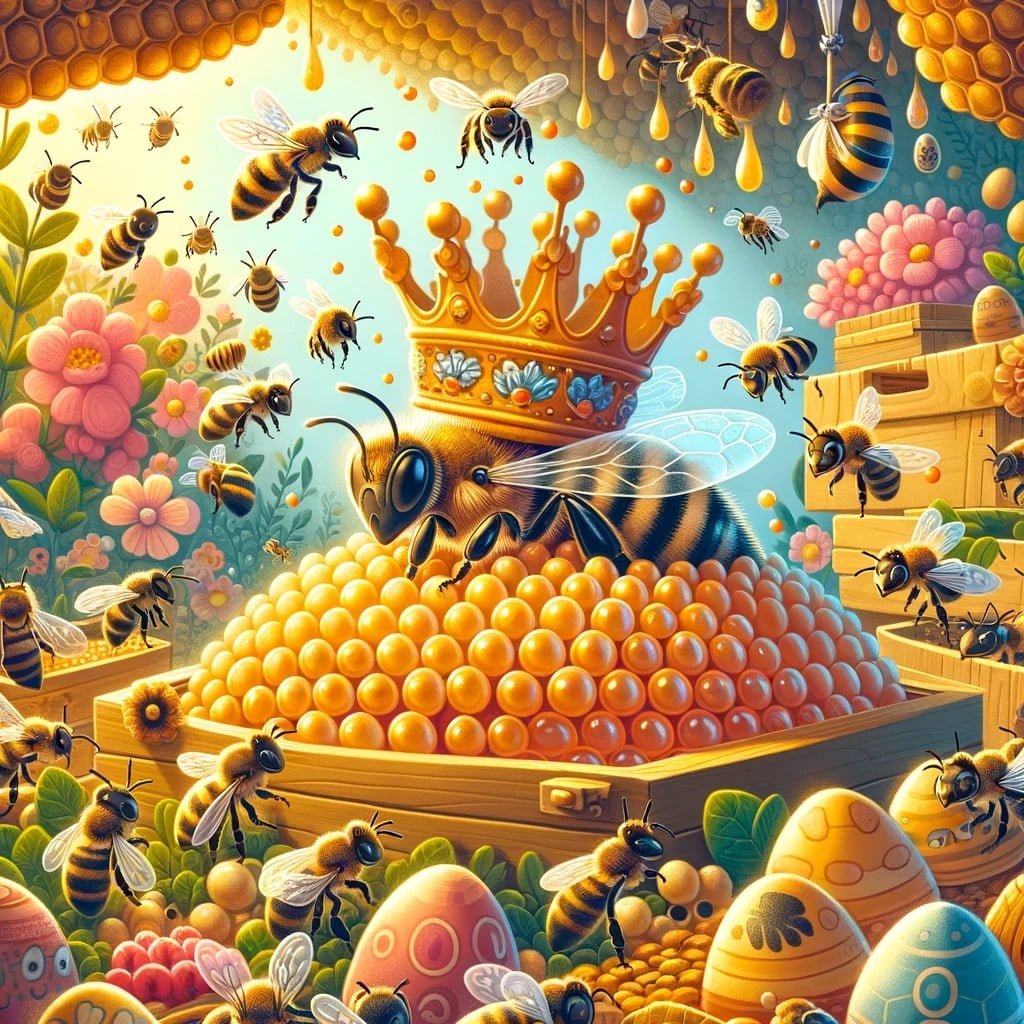
For younger kids: The queen bee is super busy—she can lay lots and lots of eggs every single day!
For older kids: The queen bee is a prolific egg layer, capable of laying up to 2,000 eggs daily, ensuring the growth and survival of the bee colony.
Detailed explanation:When it comes to Bee Facts For Kids, one of the most incredible pieces of information is that the Queen Bee has the amazing ability to lay up to 2,000 eggs in a single day. This astonishing feat is crucial for the survival and growth of the honeybee colony.
The process of the Queen Bee laying eggs begins when she mates with drones soon after emerging as an adult. Once fertilized, she has a spermatheca organ in her abdomen where she can store the sperm for a long period of time. This allows her to lay eggs for the rest of her life without needing to mate again.
Each egg that the Queen Bee lays is meticulously placed into a cell within the honeycomb structure of the hive. The bees then care for the eggs, feeding them with royal jelly until they hatch into larvae. It is truly remarkable how the Queen Bee’s prolific egg-laying abilities contribute to the growth and development of the entire colony.
The vast number of eggs laid by the Queen Bee is essential for the colony’s survival, as worker bees, drones, and future Queens are all produced from these eggs. This remarkable biological process demonstrates the complexity and efficiency of the honeybee society. So, the next time you see a bee buzzing around, remember the incredible reproductive abilities of the Queen Bee and the vital role she plays in the hive.
Bee Facts For Kids
7. Bees Have Five Eyes
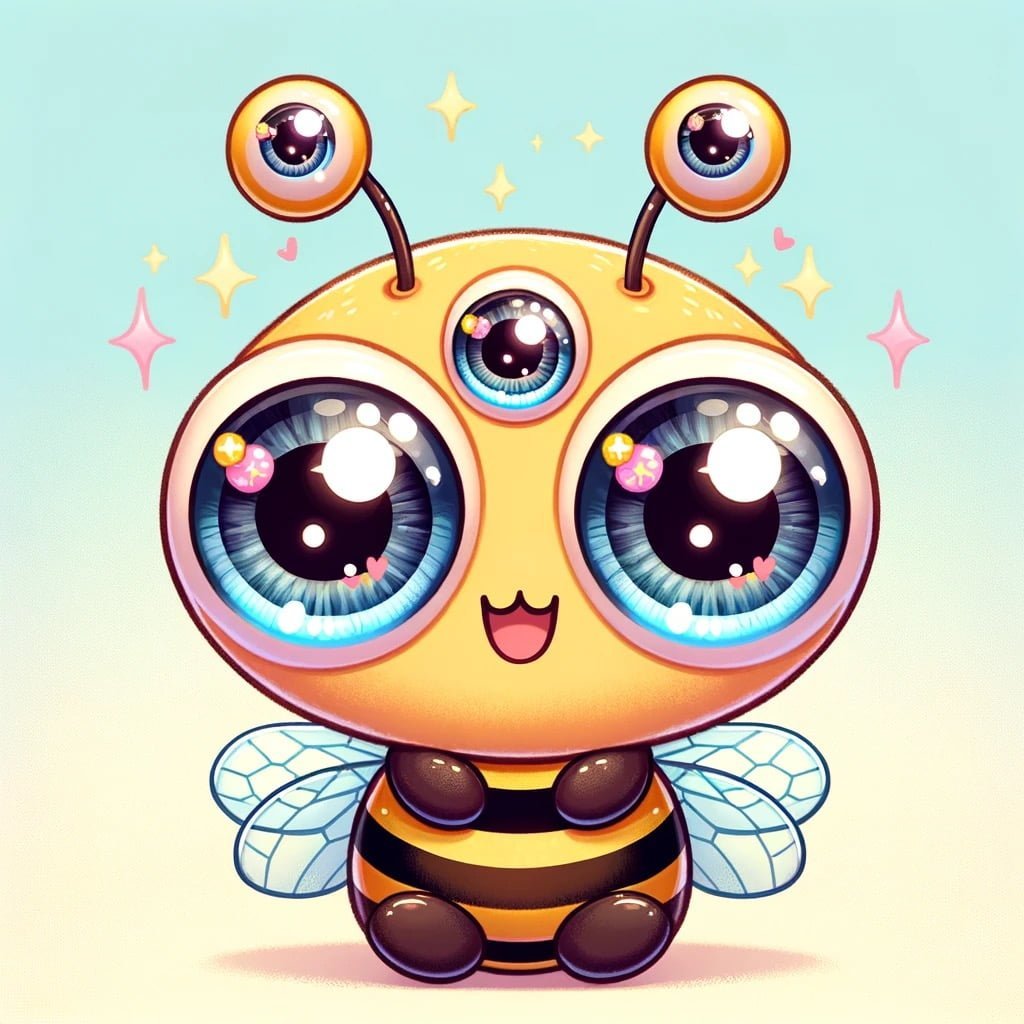
For younger kids: Bees don’t just have two eyes like us—they have five eyes in total!
For older kids: Bees possess five eyes, consisting of two large compound eyes and three smaller simple eyes (ocelli) that help them navigate and detect changes in light intensity.
Detailed explanation:Bees are fascinating creatures with many unique characteristics, one of which is their five eyes. While most people are familiar with the two large compound eyes that bees have on the sides of their heads, they also possess three smaller eyes known as ocelli on the top of their heads. These ocelli are simple eyes that are sensitive to light intensity and help the bees navigate and orient themselves in the air.
The compound eyes of bees are made up of thousands of individual lenses called ommatidia, which allow them to see a wide range of colors and detect polarized light. This incredible vision is essential for bees to forage for food, navigate back to their hives, and communicate with other bees through complex dance patterns.
The ocelli, on the other hand, are not as powerful as the compound eyes but serve an important purpose in helping bees maintain stability during flight. These three eyes work together to detect changes in light intensity and help bees adjust their flight path accordingly. This is especially important for bees when they are flying at high speeds or in windy conditions.
Overall, the combination of five eyes in bees allows them to have a unique and multifaceted perspective of the world around them. Their incredible vision and sensory capabilities play a crucial role in their survival and success as pollinators. It is truly amazing to think about the intricate design of these tiny creatures and how each of their five eyes contributes to their remarkable abilities. The more we learn about bees, the more we realize just how extraordinary they are.
In conclusion, Bee Facts For Kids include the fascinating fact that bees have five eyes, each serving a specific purpose in helping these buzzing insects thrive in their environments.
Bee Facts For Kids
8. Honey Bees Produce Beeswax from Their Bodies

For younger kids: Bees make their homes using special wax that they create inside their bodies!
For older kids: Honey bees have special glands in their abdomen that secrete wax, which they then chew and mold to build the intricate hexagonal cells of their beehives.
Detailed explanation:Beeswax is a natural substance produced by honey bees from glands in their bodies. It is an incredibly versatile material that is used by bees to build their intricate hexagonal honeycomb cells. These cells serve as storage units for honey, pollen, and developing bee larvae. The beeswax is secreted in the form of small scales, which are then chewed and molded by the worker bees into the characteristic hexagonal shape of the honeycomb.
One of the remarkable things about beeswax is its unique composition. It is made up of various compounds, including esters, hydrocarbons, and fatty acids. This complex mixture gives beeswax its distinctive properties, such as being waterproof, malleable, and slow to deteriorate. These qualities make it the perfect material for constructing the honeycomb, as it provides a secure and hygienic environment for the bees’ food and offspring.
Besides its role in building honeycomb, beeswax also has other important uses within the hive. It is used to seal small gaps and cracks in the hive, acting as a form of insulation and protection against predators and inclement weather. Additionally, beeswax plays a crucial role in the process of honey production, as it is used to cap off the cells once they are filled with ripened honey.
Overall, beeswax is an essential substance in the life of honey bees, enabling them to carry out their various tasks within the hive effectively. Its production from the bodies of bees showcases the incredible adaptability and resourcefulness of these remarkable insects. So, the next time you see a honeycomb filled with golden honey, remember the hard work and ingenuity that went into producing the beeswax that made it all possible.
Bee Facts For Kids
9. Bees Have to Visit 2 Million Flowers to Make 1 Pound of Honey
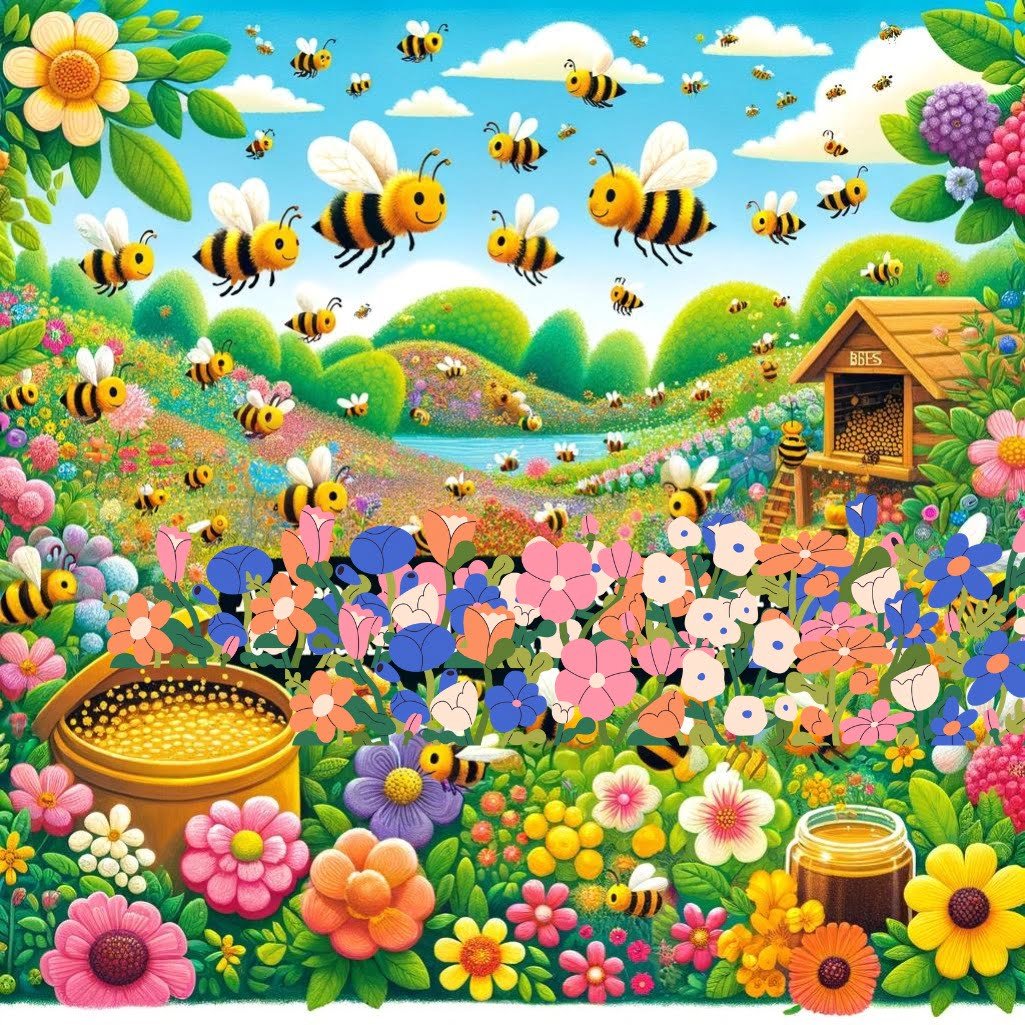
For younger kids: Bees work really hard to make honey—they have to visit so many flowers!
For older kids: To produce just one pound of honey, bees must visit approximately 2 million flowers to collect nectar and pollen, highlighting their incredible dedication to honey-making.
Detailed explanation:Bees are incredible creatures that play a vital role in pollination and the production of honey. One fascinating fact about bees that many people may not be aware of is that they have to visit a staggering 2 million flowers in order to produce just one pound of honey. This may seem like an astonishing number, but when we consider the process involved in making honey, it starts to make more sense.
When a bee sets out on a foraging trip to collect nectar, it will visit numerous flowers in search of this sweet substance. As it lands on each flower, the bee uses its long proboscis to suck up the nectar, which it stores in its honey stomach to bring back to the hive. In the process of collecting nectar, bees inadvertently transfer pollen from one flower to another, aiding in the pollination of plants.
Back at the hive, the bees will regurgitate the nectar and pass it along to other worker bees who will further process and store it in honeycomb cells. Through a process of dehydration and enzyme activity, the nectar is transformed into honey that can be stored and consumed by the colony throughout the winter months when food is scarce.
The fact that bees have to visit 2 million flowers to produce 1 pound of honey highlights the industrious and hardworking nature of these insects. It also serves as a reminder of the importance of bees in the ecosystem and the need to protect them and their habitats. By understanding and appreciating these bee facts for kids, we can help educate the next generation about the crucial role bees play in our environment.
Bee Facts For Kids
10. Bees Do a Waggle Dance to Share Food Locations
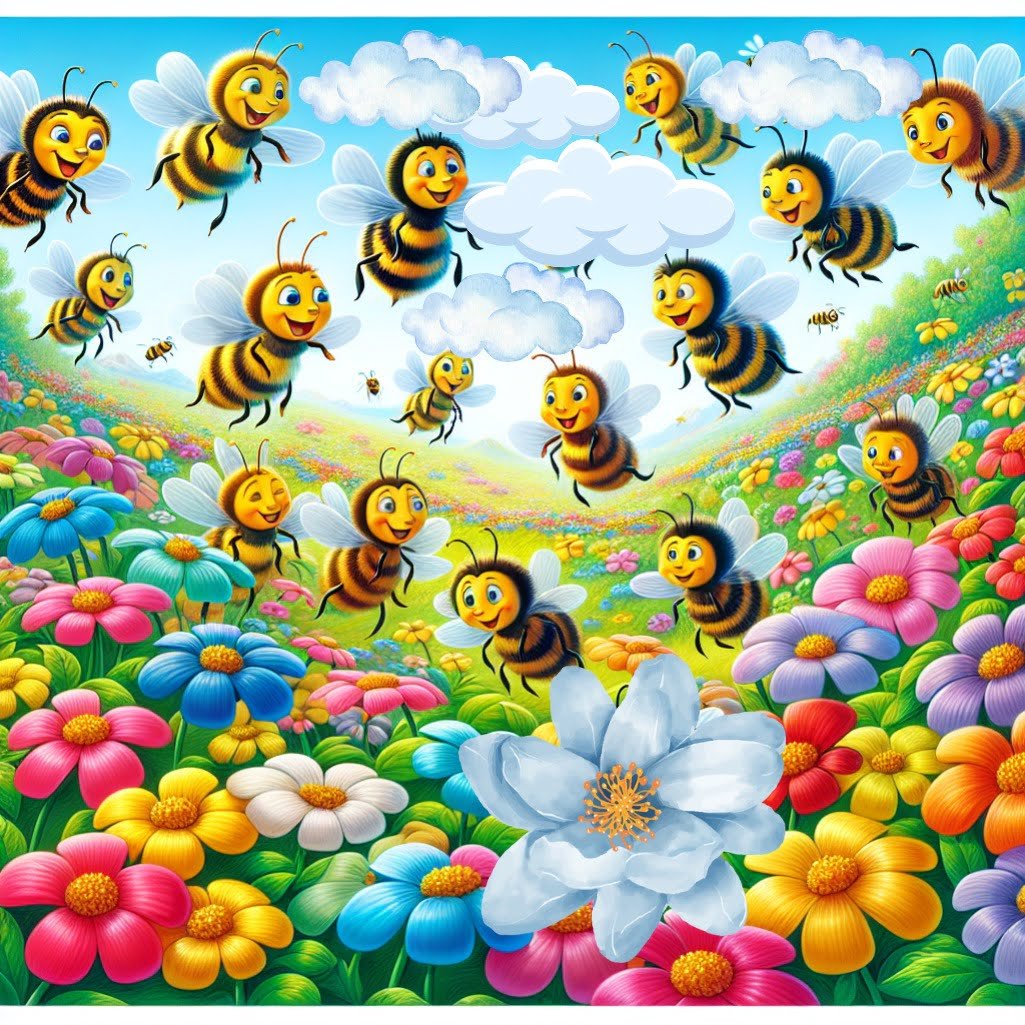
For younger kids: Bees’ dance moves help friends find yummy food quickly!
For older kids: Through complex ‘waggle dances’, bees communicate the direction and distance of food sources, allowing their fellow colony members to quickly locate the best nectar and pollen spots.
Detailed explanation:Bees are fascinating insects that exhibit incredibly complex behaviors, one of which is the waggle dance. This unique form of communication is used by bees to share information about the location of food sources with their hive mates. The waggle dance is a series of intricate movements performed by a foraging bee inside the hive, which conveys the distance and direction of the food in relation to the position of the sun.
When a foraging bee returns to the hive after discovering a bountiful food source, it performs the waggle dance on the vertical surface of the honeycomb. The dancer bee moves in a figure-eight pattern, waggling its abdomen while circling back to the starting point. The angle of the waggle relative to the vertical position of the honeycomb indicates the direction in which other bees must fly to reach the food source. The duration of the waggle phase correlates with the distance of the food source, with longer waggles representing farther distances.
Other worker bees in the hive observe and decode the waggle dance, allowing them to determine the location of the food source. Through this intricate form of communication, bees are able to efficiently share valuable information with their colony and coordinate their foraging efforts. The waggle dance is a remarkable example of the sophisticated social organization and communication skills of bees, making it a captivating subject to study and learn about, especially for aspiring entomologists and nature enthusiasts. So, the next time you see a bee buzzing around a flower, remember the intricate waggle dance they may perform to share the location of their tasty treats. Bee Facts For Kids are endless, and these tiny insects continue to amaze us with their remarkable behaviors.
Did you know?
Did you know that bees can flap their wings up to 11,400 times per minute?
Summary of Bee Facts For Kids
If you’re looking for fascinating facts about bees that will captivate and educate kids of all ages, look no further! This blog post delves into the amazing world of bees, showcasing their incredible abilities and behaviors that will leave readers in awe. From bees communicating through intricate dances to recognizing human faces, from producing beeswax to working tirelessly to make honey, these buzzing insects showcase a level of intelligence and organization that is truly remarkable. With fun facts tailored for both younger and older kids, this blog post is a treasure trove of information that will spark curiosity and appreciation for these essential pollinators. So, dive into the world of bees and discover just how extraordinary these tiny creatures truly are!
Sources and additional information for Bee Facts For Kids
WikipediaBritannicaSan Diego Zoo KidsThe Smithsonian InstitutionDK Find Out!Australian MuseumWorld Wildlife FundThe Nature ConservancyAnimal PlanetMonterey Bay AquariumPBS NatureSmithsonian’s National Zoo & Conservation Biology InstituteWorld Wildlife FundAnimal Diversity Web (University of Michigan)IUCN Red List of Threatened SpeciesThe Cornell Lab of Ornithology – All About BirdsNational Audubon SocietyEncyclopedia of LifeSeaWorld Parks & EntertainmentAustralian Museum – AnimalsEncyclopedia of Life
